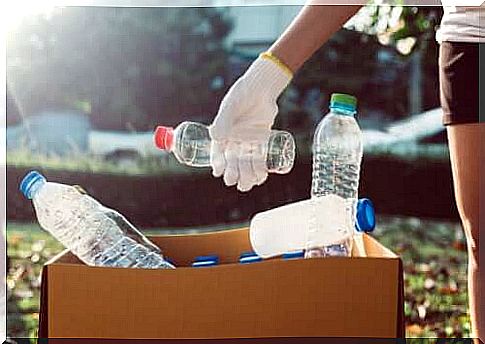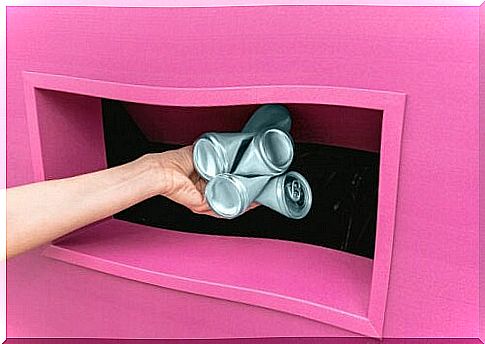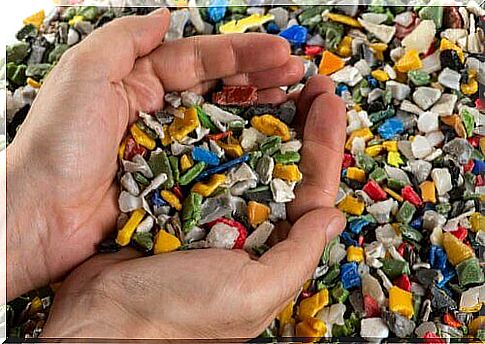What Is The Decomposition Time For Everyday Objects?

Only when we know how long the most common objects take to degrade in nature do we realize the damage caused by the waste we generate. If we knew the decomposition time of certain products, maybe we would avoid using them or at least reduce their consumption.
The importance of recycling goes beyond the reuse of objects we use every day. After applying certain processes, we can go back to using these materials, but the most important thing is the impact of this on the environment. It is about contributing to the health of the planet and freeing forests, jungles, beaches and savannas from the harmful effects that waste causes when it ends up in these places.
paper and cardboard
Paper is made from cellulose, a polymer made up of thousands of glucose molecules that belongs to the world of carbohydrates. It is within the main components of the plants and, according to the different processes it goes through during its manufacture, it will have its final appearance.
In addition to having a long history, paper is present everywhere: home, work, school, office. In the act of filling out a form, buying a book, or hand-writing a note, paper seems to be essential.
Each time we discard a sheet of paper, the decomposition time will be 5 to 12 months. Only after that time will the material disintegrate in the environment. It doesn’t seem like much, but it needs to be in the necessary conditions for its correct biodegradation. In other words, it must receive light, water and oxygen for this process to happen naturally.

Aluminum objects
Aluminum is in the light metals group and is widely used to replace steel in certain structures that require less load. It is also used in construction, in the automotive and aeronautics industry and in the manufacture of packaging.
In this sense, aluminum cans can be recycled with a very high recovery rate, which can reach 95%. Almost all packaging is recovered for recycling and reuse. However, if the can goes to waste without being recycled, it will take about 10 years to degrade.
Another very common type of container that many of us certainly use is the tetrabrik , which is made from cellulose, polyethylene and aluminum. In this case, it will take 30 years until it is completely disintegrated.
plastic objects
Plastic is a synthetic material made from petroleum derivatives. The advantages of using it in the manufacture of all kinds of objects are so great that its use has become excessive and a threat to all ecosystems.
Plastic objects are within the group with the longest decomposition time. We are talking about centuries. Its degradation can take up to 500 years. However, they end up not disintegrating, but turning into microplastics that stay in the sea, beaches and soils around the world.
Batteries
Batteries are composed of several substances, including some that are very harmful to health and the environment: magnesium dioxide, mercury, nickel and cadmium. In small quantities, they may not cause damage, but if we talk about thousands of tons, the picture changes radically.
There are different types of batteries: zinc-carbon, alkaline, lithium. Although each has different uses, they all pollute the soil and water to a greater or lesser degree.
When the disintegration process starts, its layers release metals such as mercury, which has a worrying polluting power. A single battery pollutes 3,000 liters of water, while a mercury battery pollutes 600,000 liters.
Glass
Glass is an amorphous ceramic material made of silica sand and dry metal oxides that are pulverized and introduced into a reactor that can reach over 1000°C. A thick liquid forms which allows the element to be molded as it reaches a solid texture.
Bottles, jars, windows, windshields, lamps… all these glass elements are part of life and even go unnoticed. There are two numbers related to glass objects that, in addition to being blunt, are shocking: they take 4000 years to degrade and are 100% recyclable.
This means that with simple actions like recycling containers, we can give the planet thousands of years of health.
Decomposition time of other objects

To find out how long the most common objects take to decompose, scientists rely on different tests. In these cases, they measure the rate of carbon dioxide production or oxygen consumption of the organisms.
For example, they put organic waste in a container with soil and micro-organisms, such as an apple peel and a plastic bag, and let the air circulate. Over the days, these microorganisms digest the materials and produce carbon dioxide, the amount of which serves as an indicator of degradation.
In the case of the plastic bag, there is no consumption of carbon dioxide by the organisms, as they do not see it as food. This means that this material is not biodegradable but is photodegradable and responds to the sun’s ultraviolet radiation.
Based on this type of disintegration, scientists estimate that it can take centuries for a plastic bag to turn into microscopic particles. In addition to the objects we’ve already mentioned, we want to share with you the degradation time of other elements we use daily.
| Vegetable | 5 days – 1 month |
| cotton clothes | 2 – 5 months |
| woolen clothes | 15 years |
| Leather shoes | 25 – 40 years old |
| Nylon fabrics | 30 – 40 years |
| cigarette butts | 1 – 12 years |
| diapers | 500 – 800 years |
| lighters | over 100 years |
| cell phone batteries | 450 – 1000 years |
| Credit cards | 1000 years |
The decomposition time of the most common objects is a cause for alarm
Environmental degradation begins when garbage is buried. Remember that everything we throw away will start its decomposition process and release harmful toxins to the environment and us.
Regardless of the years, centuries and millennia it may take for the materials to disintegrate, the important thing is to be aware that the Earth’s health is in our hands. We invite you to put into practice the concept of the three Rs: reduce, reuse and recycle.
With little effort, we can help conserve the planet now that we know how long it takes for common objects to degrade in nature.









